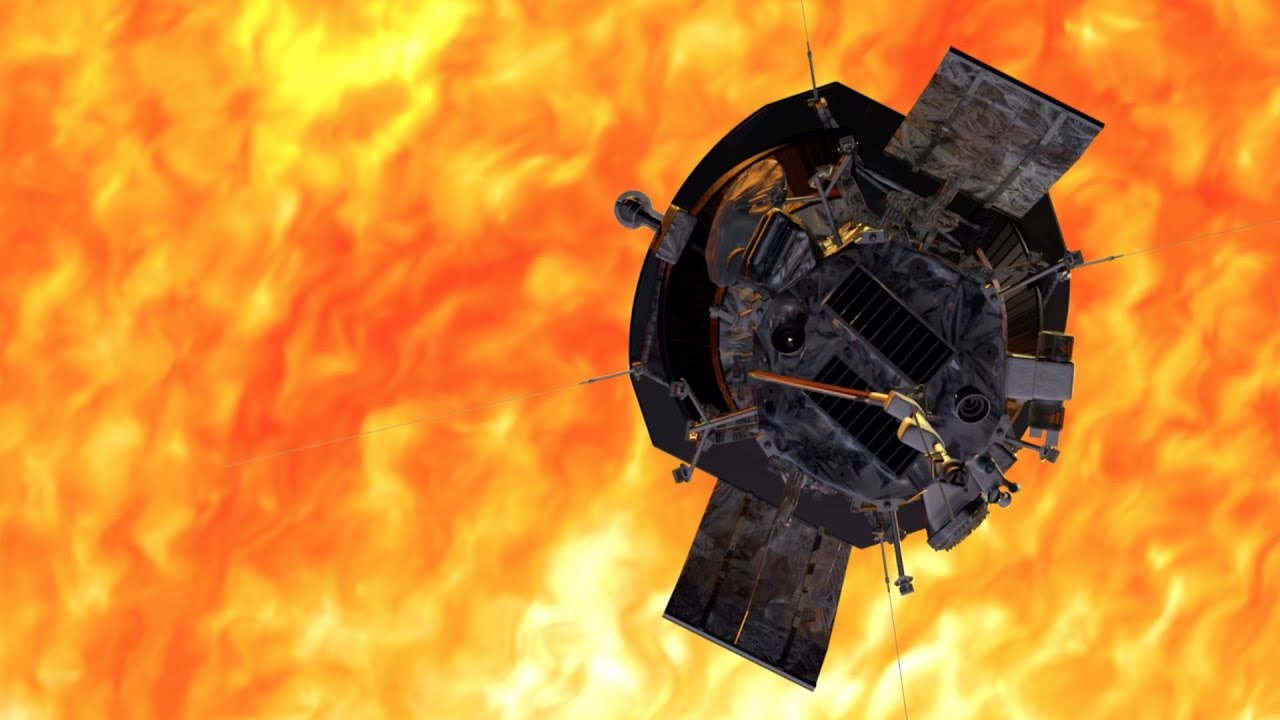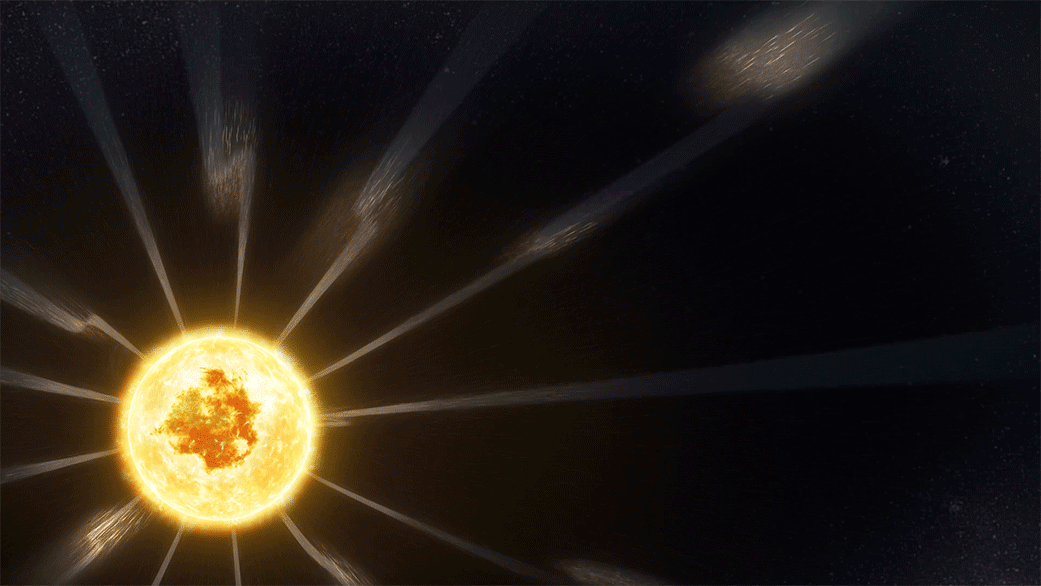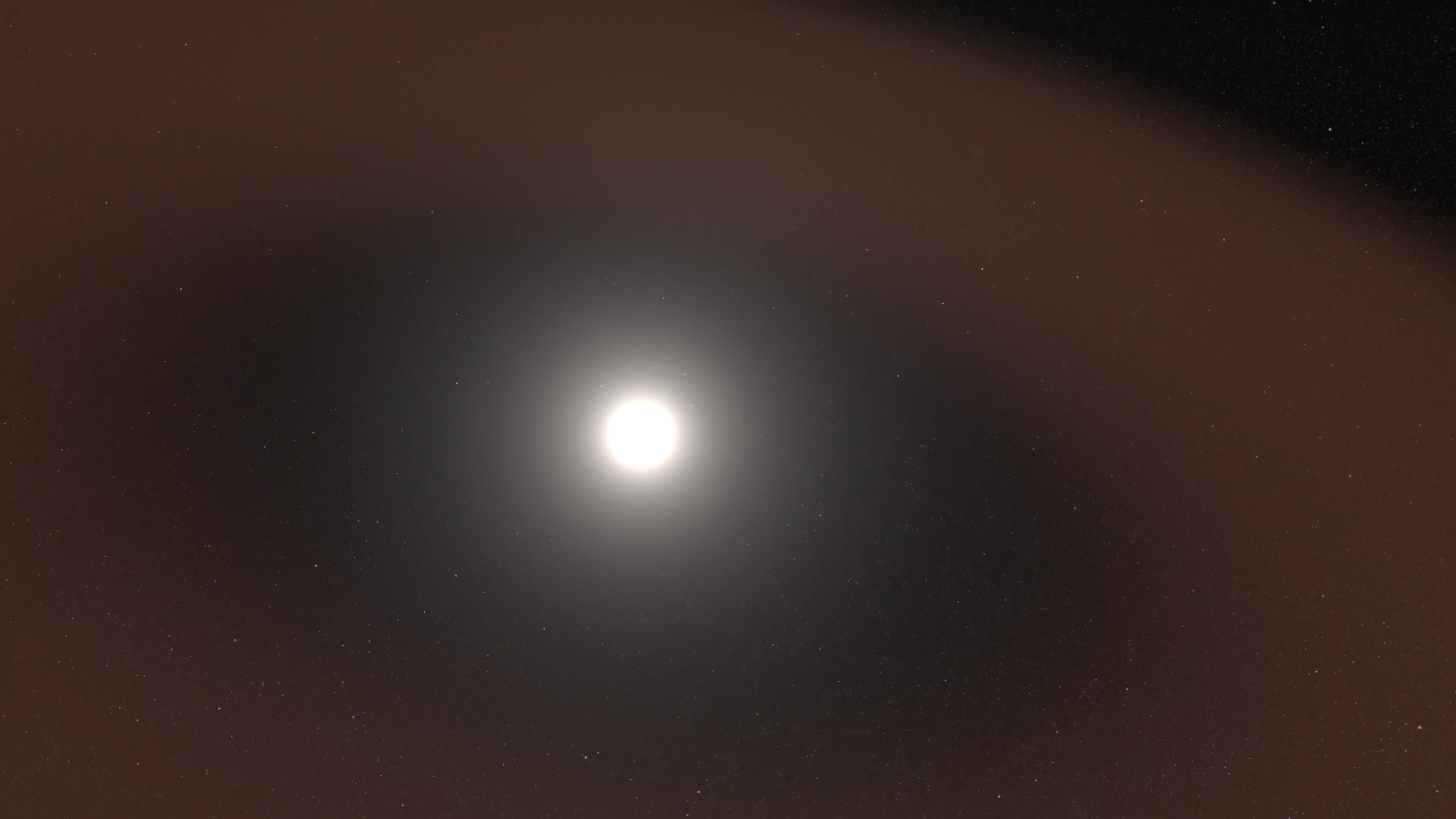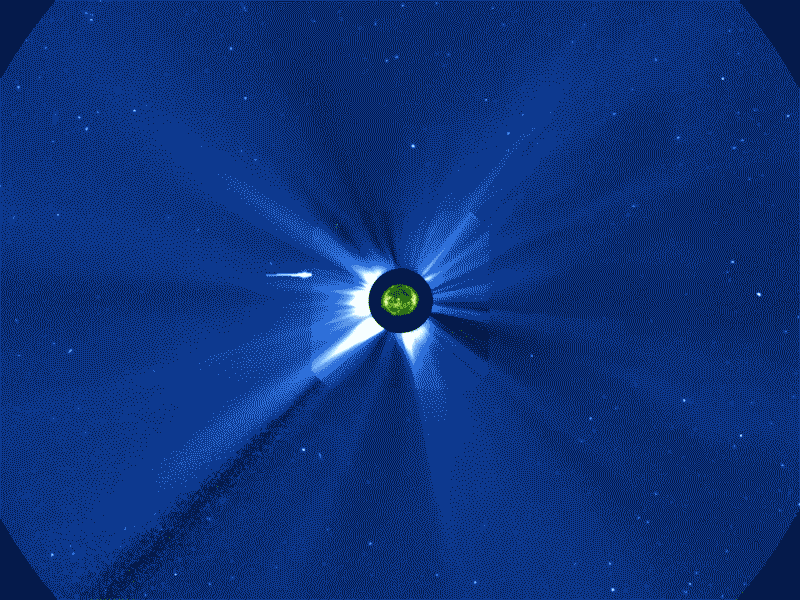Press Release
Parker Solar Probe Sheds New Light on the Sun
In August 2018, NASA’s Parker Solar Probe launched to space, soon becoming the closest-ever spacecraft to the Sun. With cutting-edge scientific instruments to measure the environment around the spacecraft, Parker Solar Probe — designed, built and managed for NASA by the Johns Hopkins Applied Physics Laboratory — has completed three of 24 planned passes through never-before-explored parts of the Sun’s atmosphere, the corona. On Dec. 4, 2019, four new papers in the journal Nature describe what scientists have learned from this unprecedented exploration of our star — and what they look forward to learning next.
These findings reveal new information about the behavior of the material and particles that speed away from the Sun, bringing scientists closer to answering fundamental questions about the physics of our star. In the quest to protect astronauts and technology in space, the information Parker has uncovered about how the Sun constantly ejects material and energy will help scientists rewrite the models we use to understand and predict the space weather around our planet and understand the process by which stars are created and evolve.
“This first data from Parker reveals our star, the Sun, in new and surprising ways,” said Thomas Zurbuchen, associate administrator for science at NASA Headquarters in Washington. “Observing the Sun from up close rather than from a much greater distance is giving us an unprecedented view into important solar phenomena and how they affect us on Earth, and gives us new insights relevant to the understanding of active stars across galaxies. It’s just the beginning of an incredibly exciting time for heliophysics with Parker in the vanguard of new discoveries.”
“Parker Solar Probe has performed exceptionally well over the past year, and we are thrilled the spacecraft has been able to carry these instruments into previously unexplored regions around the Sun to collect so much new insight into how our star works,” said Jason Kalirai, civil space mission area executive at Johns Hopkins APL.
Though it may seem placid to us here on Earth, the Sun is anything but quiet. Our star is magnetically active, unleashing powerful bursts of light, deluges of particles moving near the speed of light and billion-ton clouds of magnetized material. All of this activity affects our planet, injecting damaging particles into the space where our satellites and astronauts fly, disrupting communications and navigation signals, and even — when intense — triggering power outages. It’s been happening for the Sun’s entire 5-billion-year lifetime, and will continue to shape the destinies of Earth and the other planets in our solar system into the future.
“The Sun has fascinated humanity for our entire existence,” said Nour E. Raouafi, project scientist for Parker Solar Probe at APL. “We’ve learned a great deal about our star in the past several decades, but we needed a mission like Parker Solar Probe to go into the Sun’s atmosphere. It’s only there that we can really learn the details of these complex solar processes. And what we’ve learned in just these three solar orbits alone has changed a lot of what we know about the Sun.”
Making this mission possible are key technologies developed by APL. The revolutionary 4.5-inch-thick (11.43 cm) carbon-composite thermal protection system — or heat shield — keeps the spacecraft and most of its instruments at a comfortable 85 degrees Fahrenheit, even as the spacecraft plunges deeper into the Sun’s fiery corona. The solar-powered spacecraft houses active water-cooled solar arrays (a first in space) that retract and extend as Parker Solar Probe swings toward or away from the Sun, making sure the panels stay at appropriate temperatures while providing the necessary power to operate the spacecraft and instruments autonomously. At its closest passes the spacecraft must survive solar intensity of about 500 times what we experience here at Earth on the hottest day of the year.
What happens on the Sun is critical to understanding how it shapes the space around us. Most of the material that escapes the Sun is part of the solar wind, a continual outflow of solar material that bathes the entire solar system. This ionized gas, called plasma, carries with it the Sun’s magnetic field, stretching it out through the solar system in a giant bubble — the heliosphere — that spans more than 10 billion miles.
“The information that the Parker team has gathered during the first year of the mission is unprecedented,” said APL's Rob Decker, Parker Solar Probe deputy project scientist. “We are starting to get some of the missing pieces of the coronal puzzle, like glimpses of how the solar wind behaves, but there is still more to explore and observe in the next several years as Parker Solar Probe gets closer and closer to the Sun. Parker Solar Probe is opening our eyes to a new reality of the corona and solar wind.”
The Dynamic Solar Wind
Observed near Earth, the solar wind is a relatively uniform flow of plasma, with occasional turbulent tumbles. But by that point it’s traveled over ninety million miles — and the signatures of the Sun’s exact mechanisms for heating and accelerating the solar wind are wiped out. Closer to the solar wind’s source, Parker Solar Probe saw a much different picture: a complicated, active system.
Like the Sun itself, the solar wind is made up of plasma, where negatively charged electrons have separated from positively charged ions, creating a sea of free-floating particles with individual electric charge. These free-floating particles mean plasma carries electric and magnetic fields, and changes in the plasma often make marks on those fields. The FIELDS instruments surveyed the state of the solar wind by measuring and carefully analyzing how the electric and magnetic fields around the spacecraft changed over time, along with measuring waves in the nearby plasma.
These measurements showed quick reversals in the magnetic field and sudden, faster-moving jets of material — all characteristics that make the solar wind more turbulent. These details are key to understanding how the wind disperses energy as it flows away from the Sun and throughout the solar system.
One type of event in particular drew the eye of the science teams: flips in the direction of the magnetic field, which flows out from the Sun, embedded in the solar wind. These reversals — dubbed “switchbacks” — last anywhere from a few seconds to several minutes as they flow over Parker Solar Probe. During a switchback, the magnetic field whips back on itself until it is pointed almost directly back at the Sun. Together, FIELDS and SWEAP, the solar wind instrument suite led by the University of Michigan and managed by the Smithsonian Astrophysical Observatory, measured clusters of switchbacks throughout Parker Solar Probe’s first two flybys.



